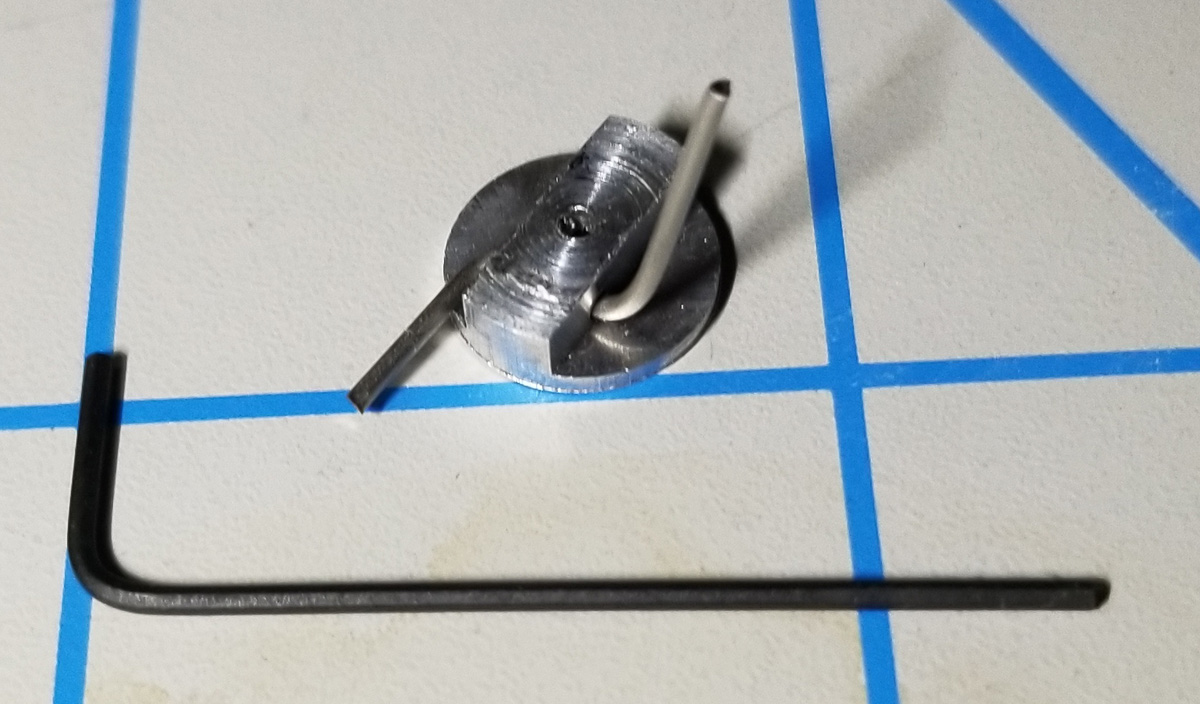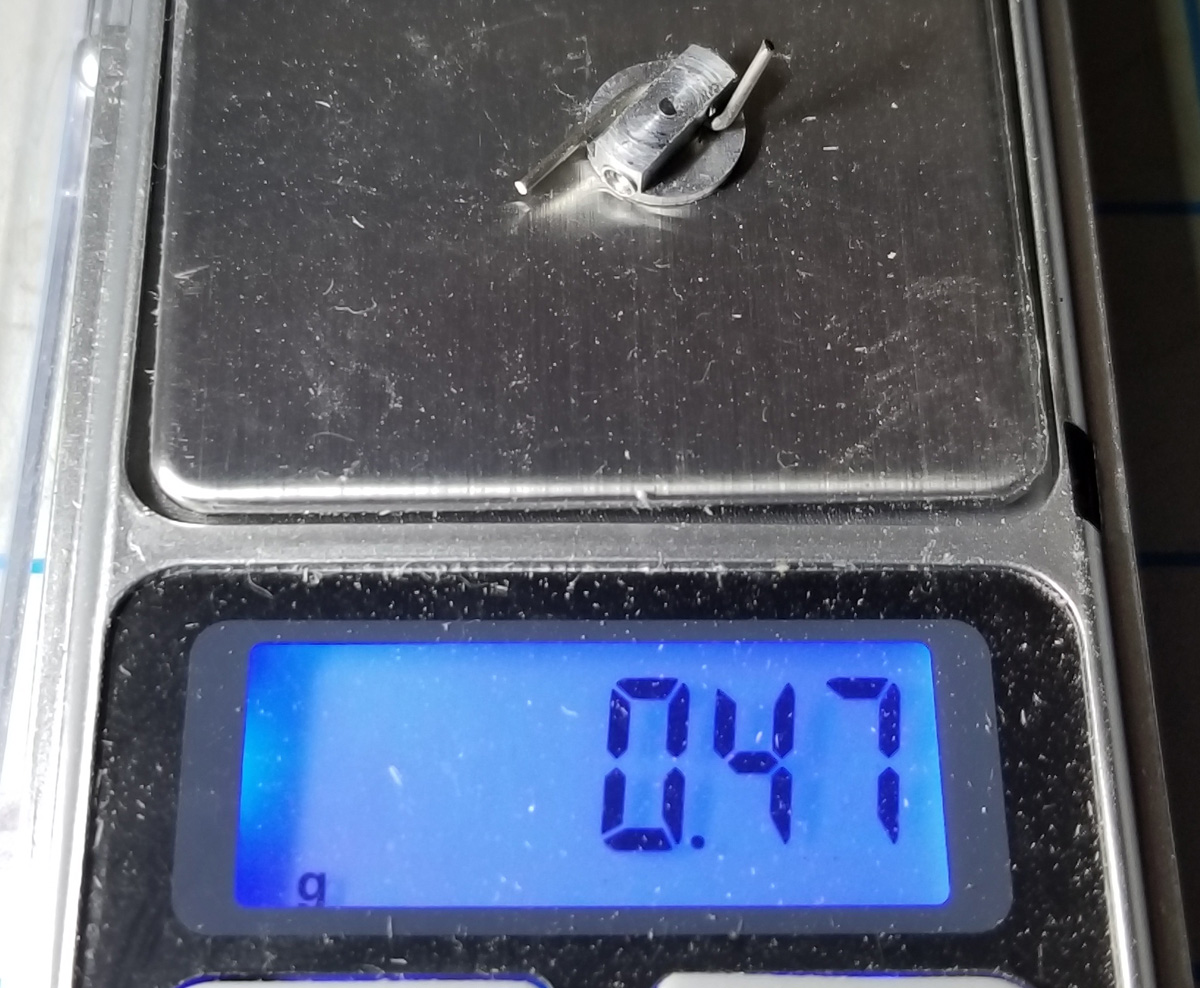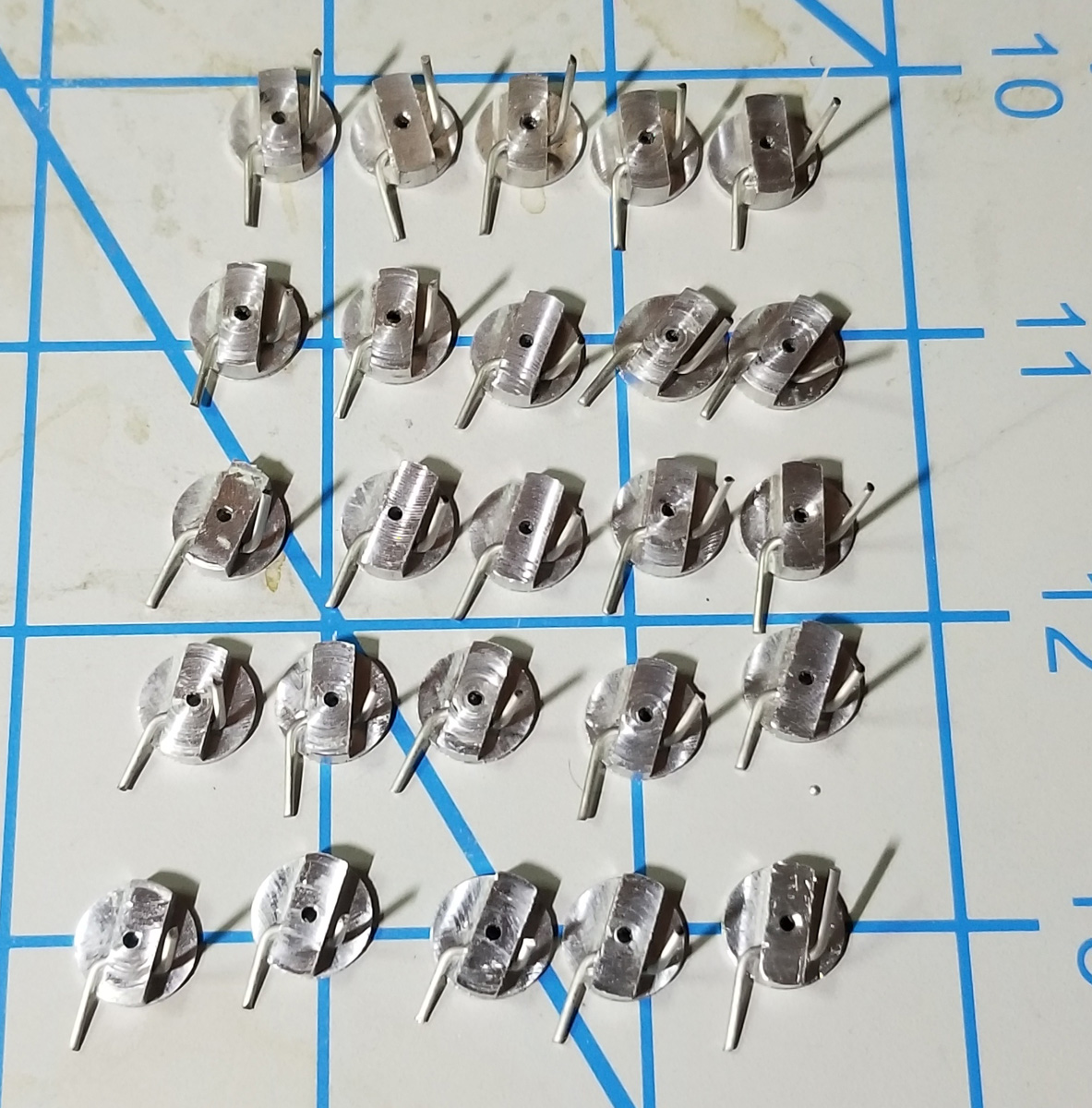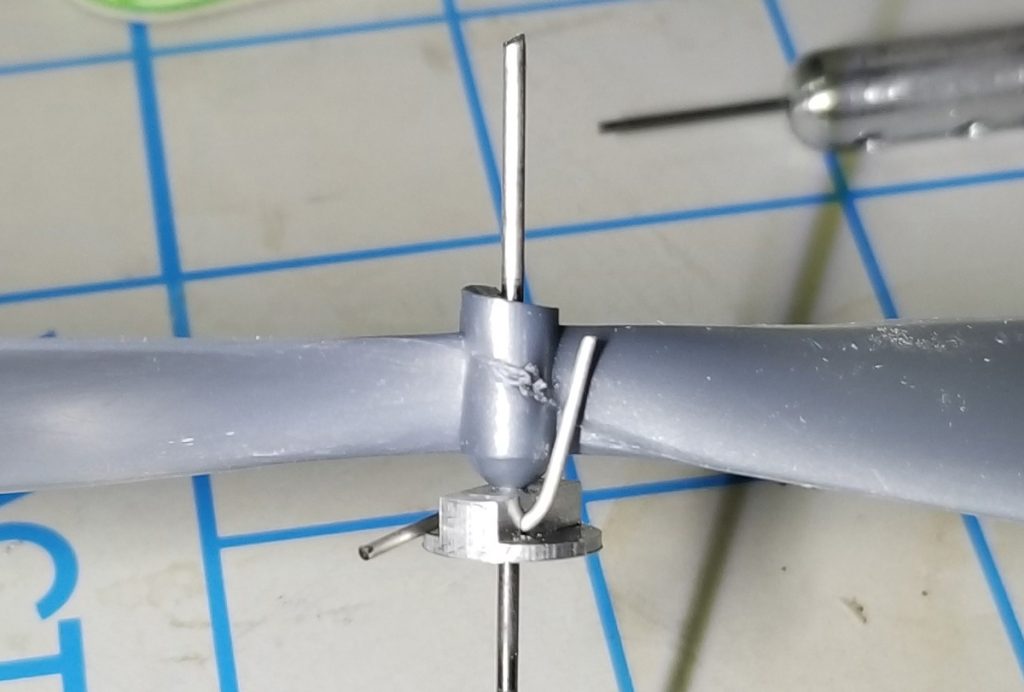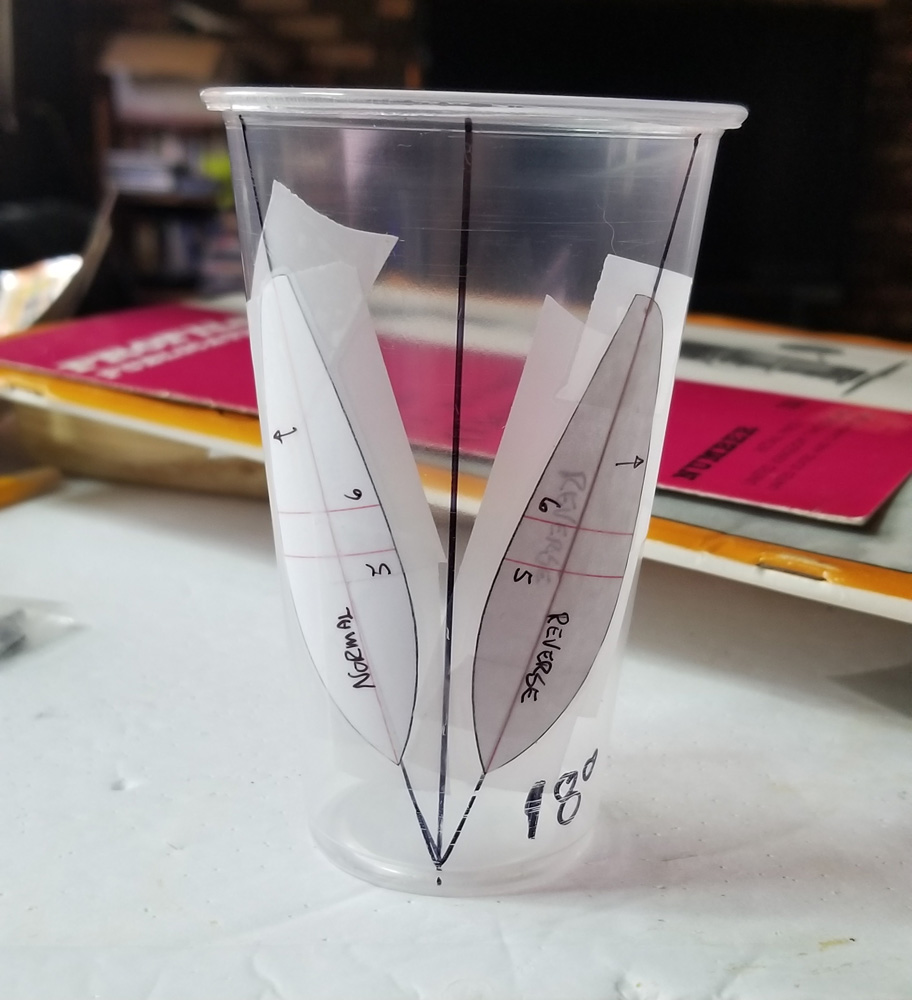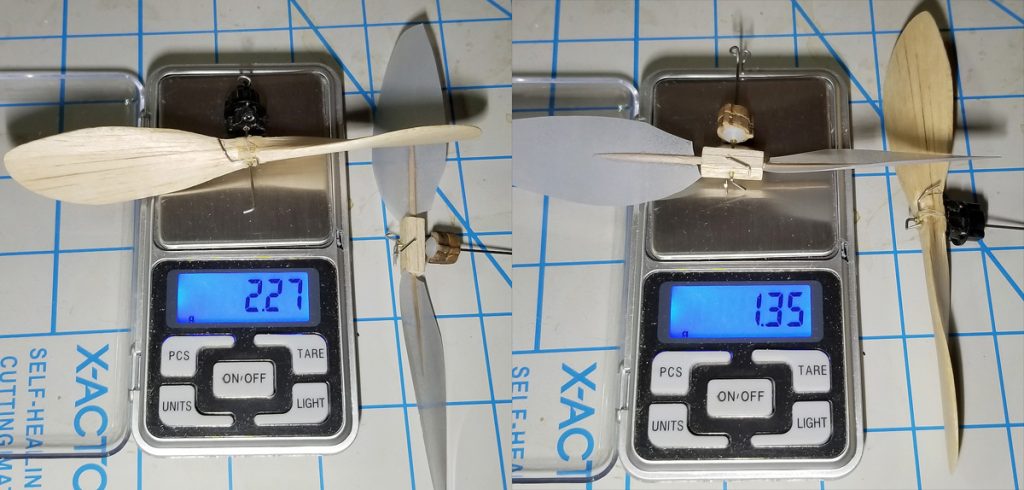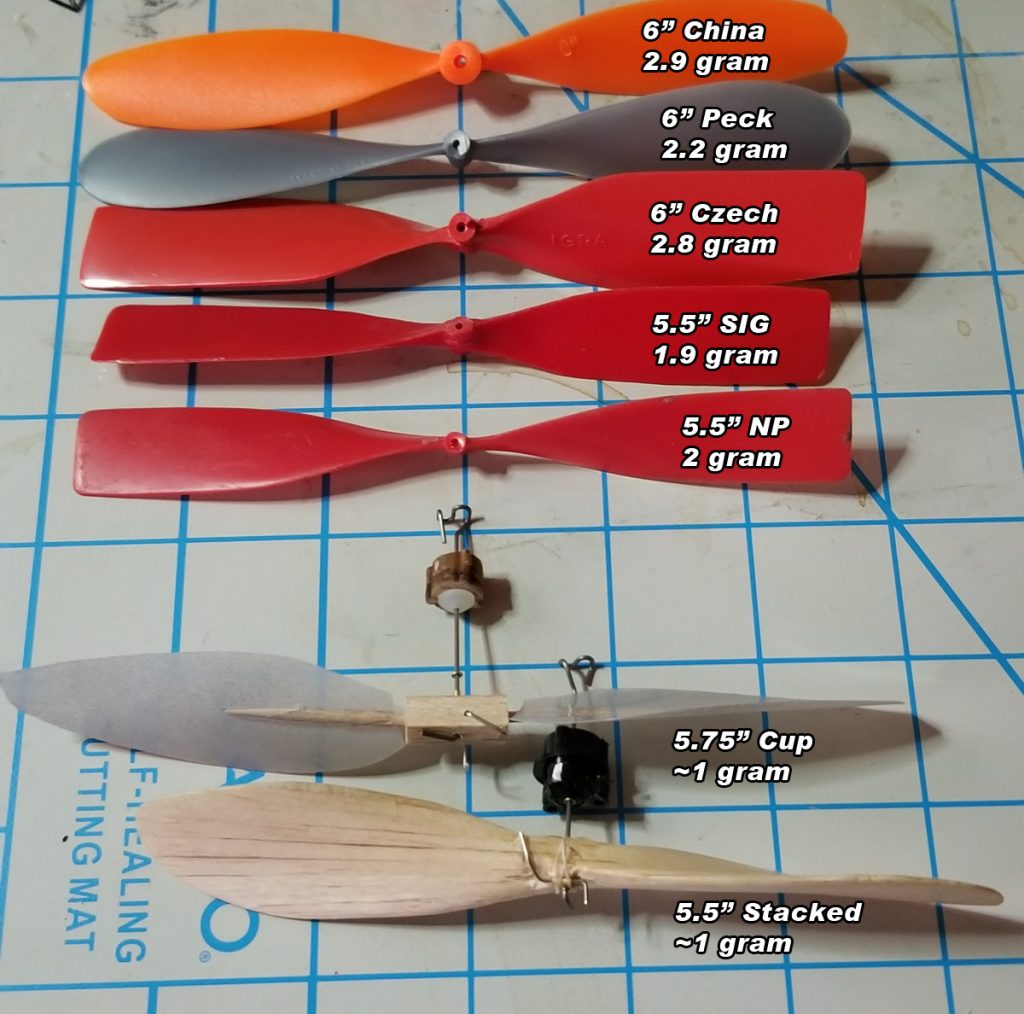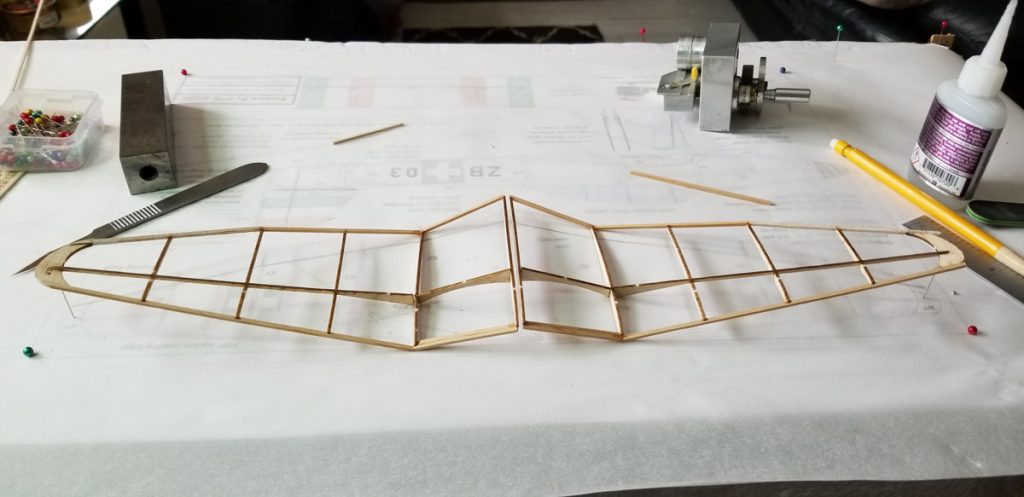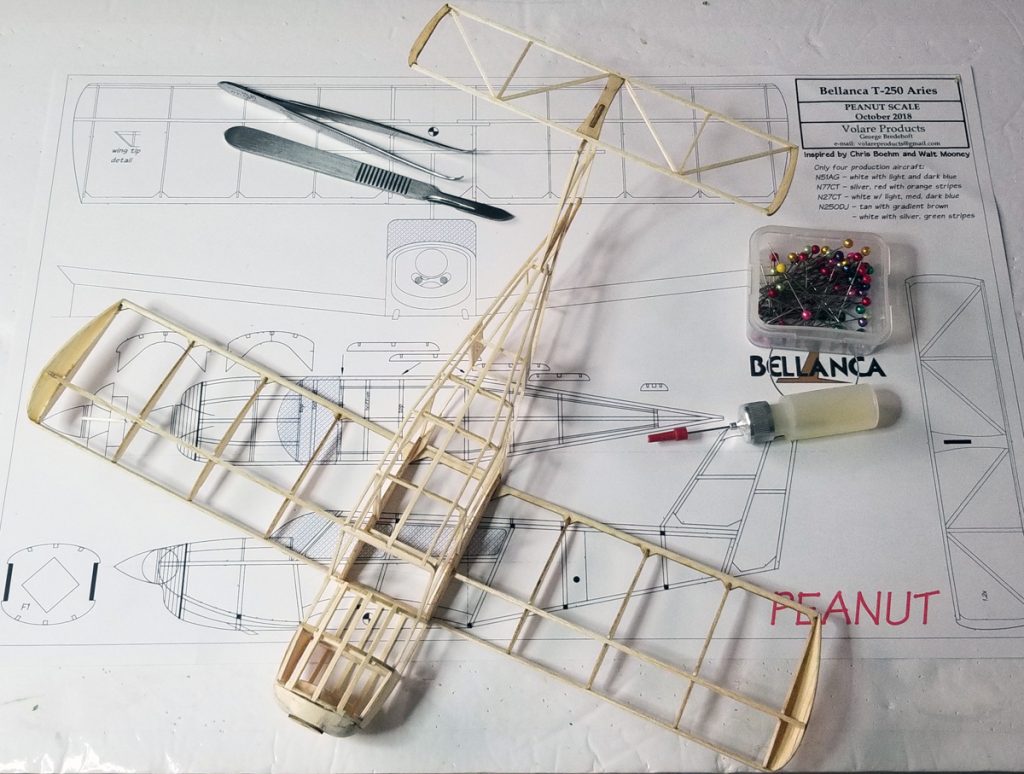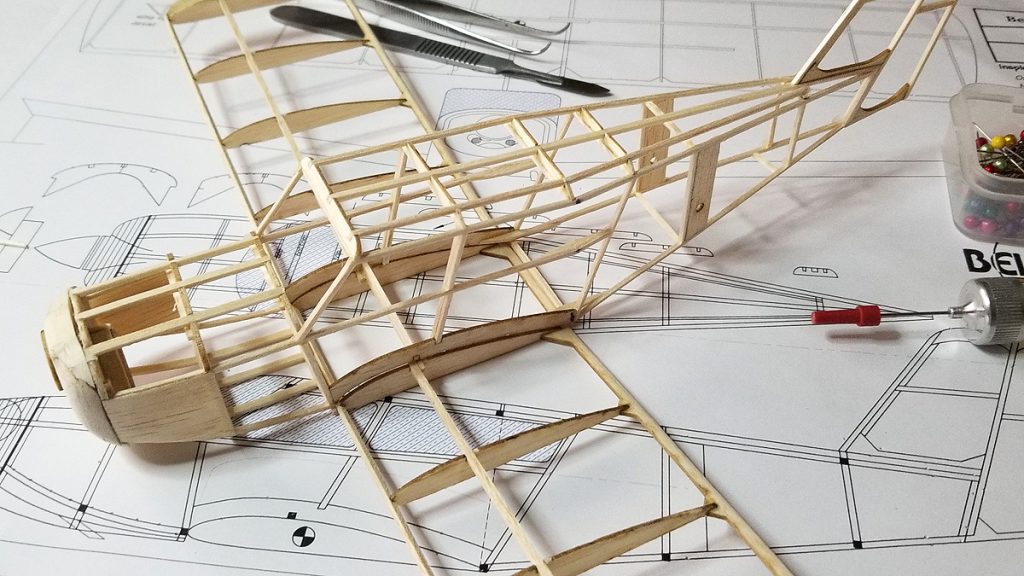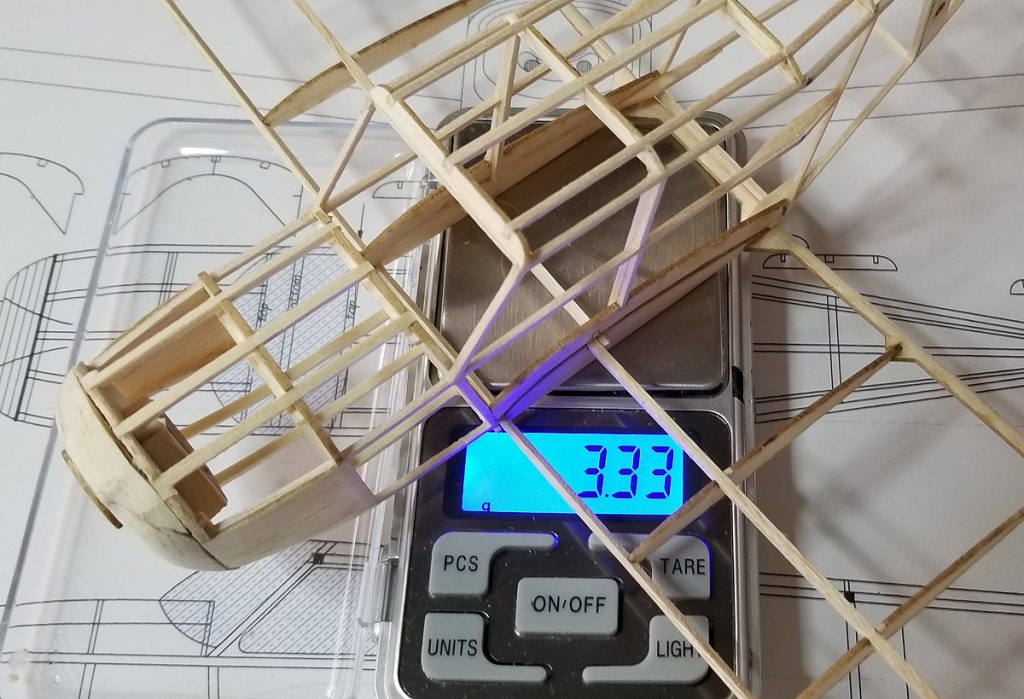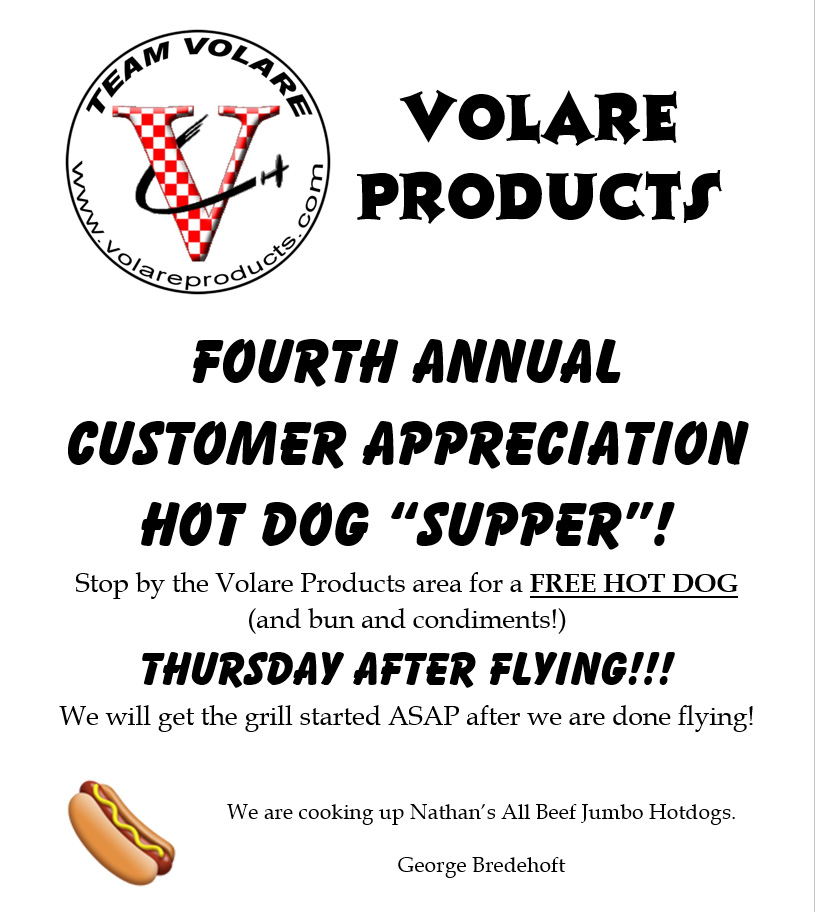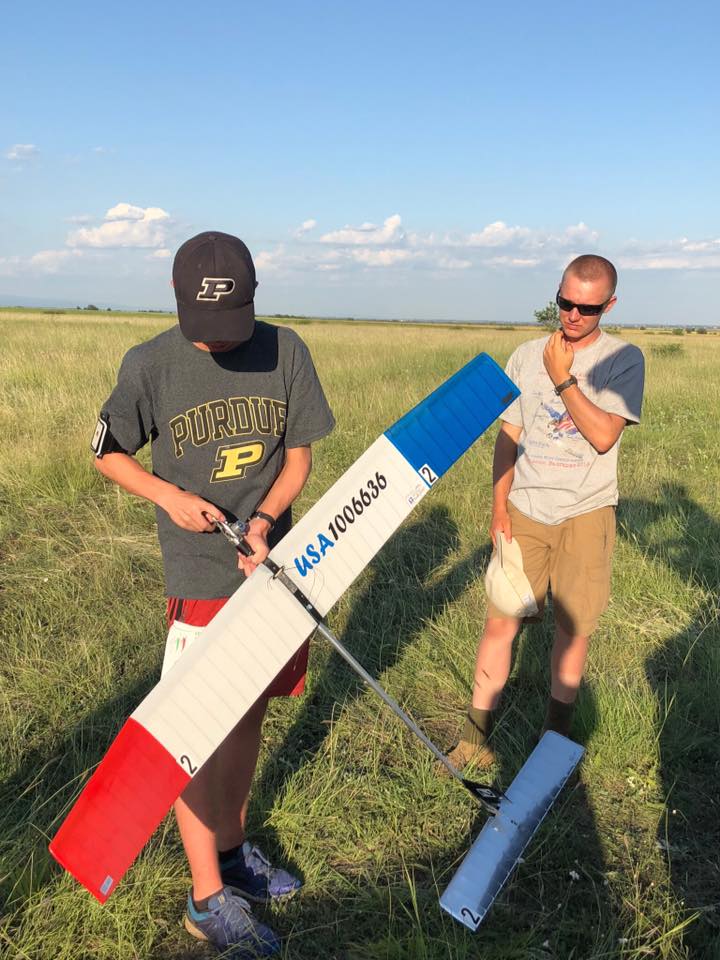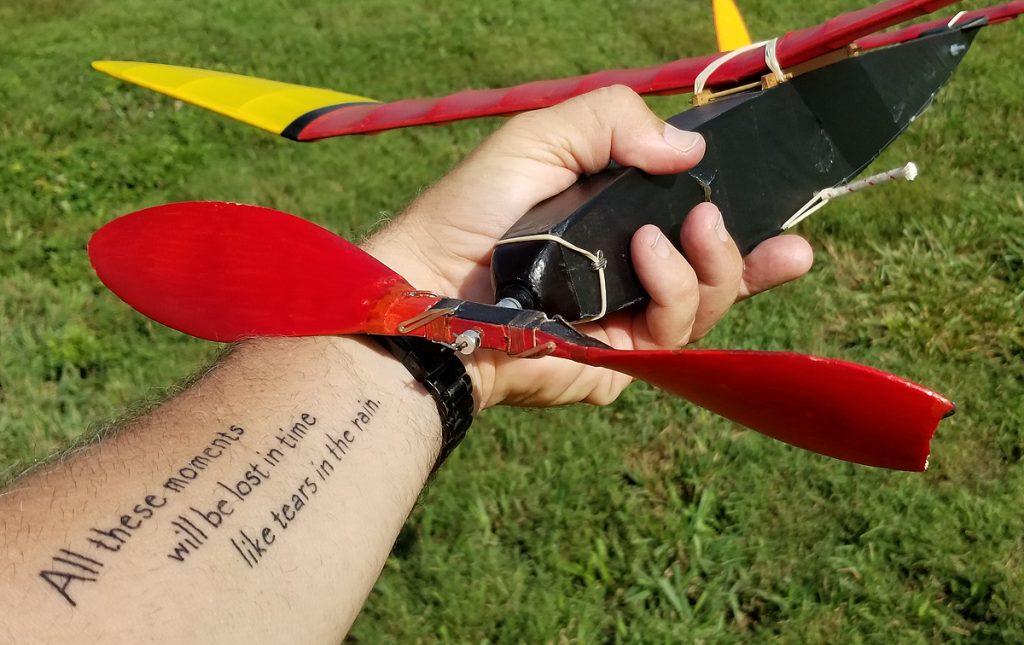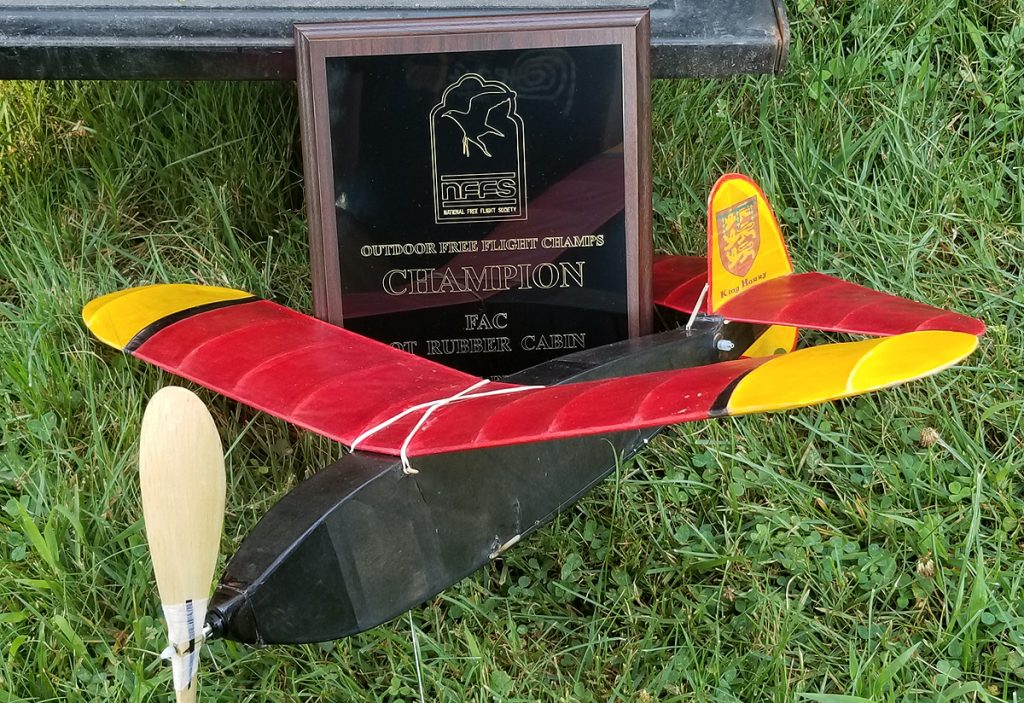A New Embryo: Over the last week or so, I’ve been working on a new Embryo design. This one is based on the Tom Nallen Durham Mystery. My flying buddy, Winn Moore, told me to extend the fuselage. He had done that, and it seemed to work well. I couldn’t leave that alone and extended the fuselage and did several other tweaks and sent the new plan – along with a fictional story regarding how the “Durham Air Limousine” came to be. I won’t publish that story until it appears in the FAC News.
The weather is not the best here in Michigan as autumn has set in. We are scheduled to have a Cloudbusters Outdoor Contest Sunday (14 Oct), weather depending. I will give the Air Limo a good test there. I did take it out in the back yard today with a short fat test motor and 300 turns and got it to climb in right spirals to about 30 feet and had a great glide – so good I almost lost it in the woods and/or creek. It’s time to stop testing in my back yard before I lose it.
I am confident this will fly and fly well. I will have short kits available soon. Here are a couple of photos of the model. (scroll past the photos to read other news items).
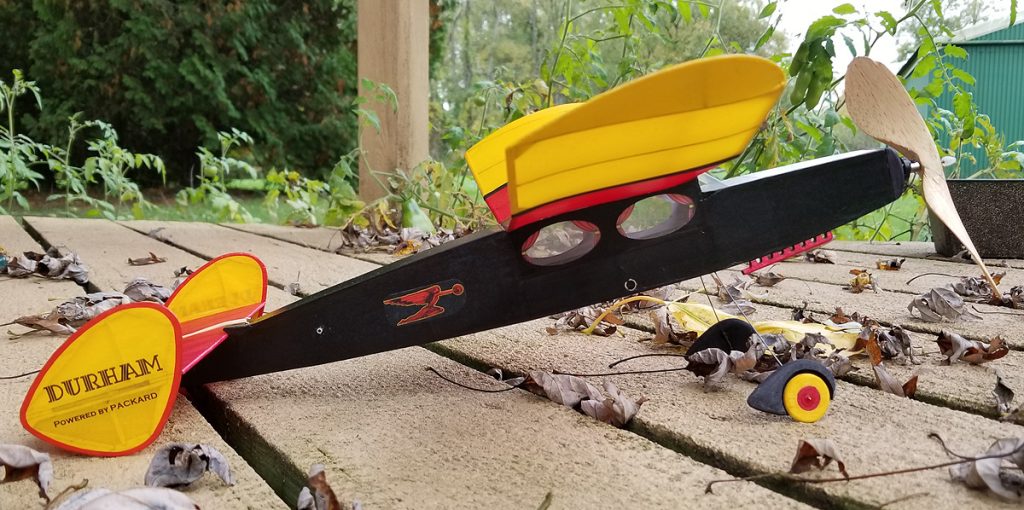
the airfoil might make some modelers say “Golly”

The wing has the same dimensions as the Durham Mystery.
P.S. these are my “standardized” endurance colors. Some say they are “garish” I say they are just right.
New Site: As you might be aware, I had my site updated – it has been a long journey. It is not “perfect” and some of you have found issues, most are caused by screen size. I paid good money for this – more than I wanted and the contractor failed to meet my expectations. But, the store is up to date and (supposedly) secure – and my blog is integrated with the web store. So, even though I have had to fix some things myself, I think it is done (or as done as I can make it, since the contractor has again disappeared on me).
Model Performance: This may be the most significant issue in my modeling in the last two or three years. I’ve been trying to step up my performance game and coming out of the July contests, I asked Don DeLoach for some pointers on how to get better performance out of my models.
I have a Wanderer that I use for OT Stick – and it has done very well over the last three seasons. I almost always get a max – but rarely more than 2.5 minutes unless assisted by good air. How can I increase my glide?
Don told me one thing (with follow-on tidbits) that really changed my models’ performances. He said:
- Calculate the CG based on TVo and balance the plane at that location.
- Adjust the glide using incidence settings – NOT CLAY.
- Once the glide is set, use only thrust settings to do the final power trim – NOT ELEVATOR and NOT CLAY.
Now I have done that – well, partially – but I took all my endurance models and calculated the CG, marked it on the wing, set the model (with motor) on my balance jig, and used clay to balance. Every plane was different than what I had been flying. I had to do the next portions of trimming at Muncie at the Outdoor Champs.
I only changed the incidence and worked up the power. I started requesting official flights as my final thrust trimming was being done. All of my endurance planes became predictable max flyers and their glide was terrific. Heed Don’s words and your flights will be better.
Here is one more important tidbit that Don gave to me:
- Downthrust’s only purpose is to control a looping tendency.
- Looping is a result of excessive Decalage.
- Excessive Decalage is a result of CG too far forward.
Let me just expand on this a little bit. Many people say 30% is good to balance, but then they need to crank up the incidence to get the model to glide. Then when they apply power, they need a lot of downthrust. Do you think – just maybe – the 30% CG is not back far enough? Stop guessing and start calculating.
I have seen a particular (and popular) model that requires a LOT of downthrust to fly. I wasn’t the only one that observed this. Using the information above, if it has too much downthrust, it must have too much decalage, and as the last bullet states, too much decalage means the model is nose heavy.
Solve this by finding the CG, setting it, and gliding. Adjust the tail incidence to get a good glide. Then apply power and you should need much less downthrust. (Note, that this model is a biplane and, like the Fokker D.vii, you probably need to set the horizontal so the leading edge is higher than the trailing edge – GIVEN THE PROPER BALANCING.
